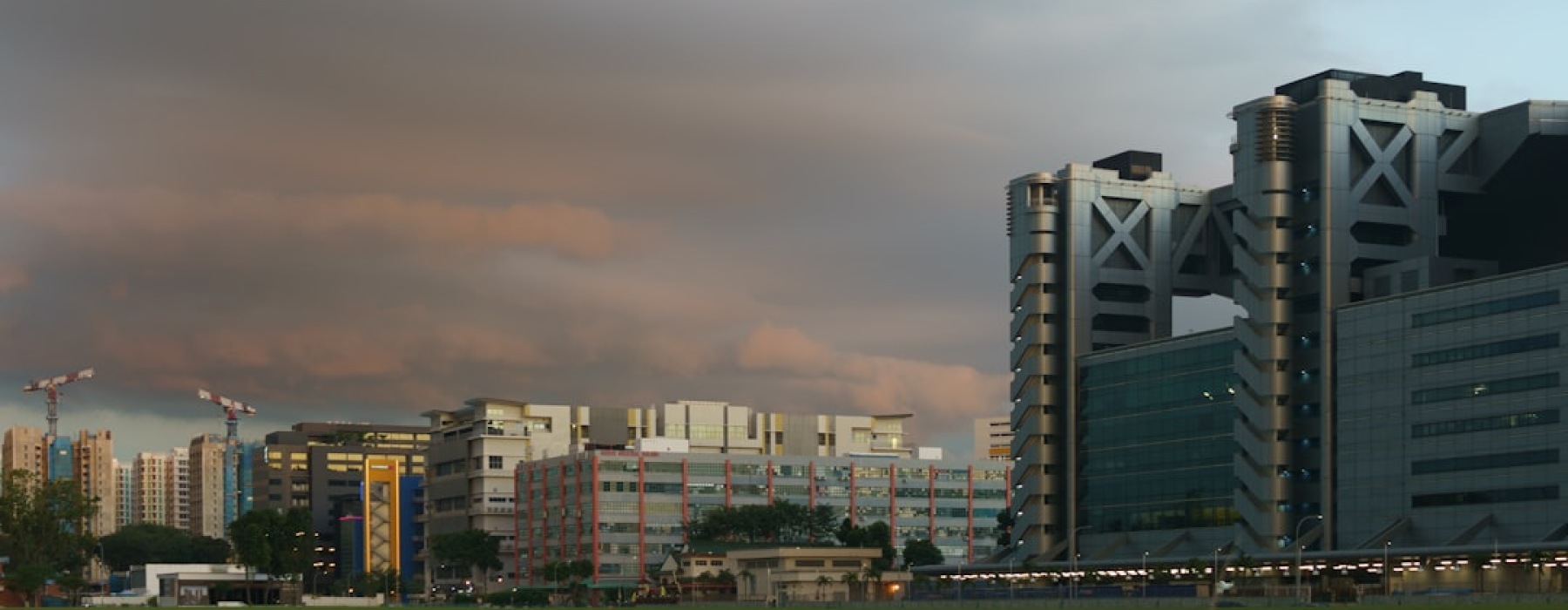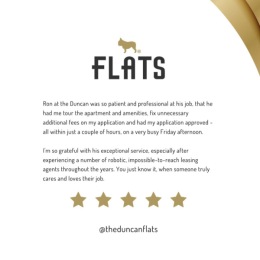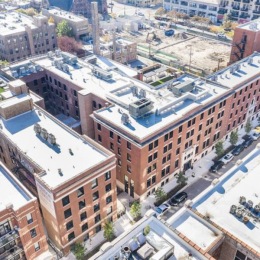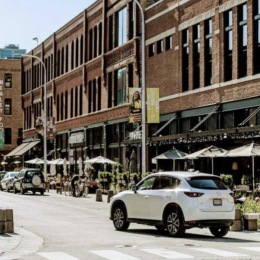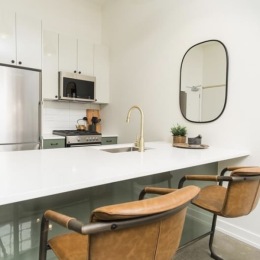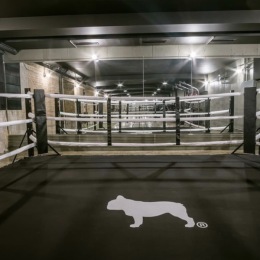What's Happening in the West Loop Housing Market Right Now
The West Loop housing market is walking a fine line between cooling and sustained competition.
At-a-glance 2025 figures
- Median sale price: $540K (▲ 9.9% YoY)
- Average days on market: 36
- Market type: Still a seller’s market, though inventory is rising
- Median rent: $2,598 (80 % of renters pay $2K+)
Demand remains high thanks to marquee employers like Google and McDonald’s, a 98 Walk Score, and limited land for new projects. At the same time, an influx of more than 1,700 luxury units is loosening supply, and 46.4 % of homes now close below asking price.
From 2015-2025, condo values jumped 89.7 % and single-family homes 86.2 %. The current data suggest the neighborhood is edging toward a healthier, more sustainable balance for both buyers and sellers.
West Loop Housing Market Snapshot 2025
The West Loop housing market in 2025 presents strength mixed with opportunity. While this neighborhood continues to command premium prices, the market has evolved from frenzied competition into something more balanced.
Current market dynamics show homes typically selling within 36 days - a shift from lightning-fast sales that gives both buyers and sellers more time to make thoughtful decisions.
Inventory levels have increased by 28.6% month-over-month, great news for buyers who felt squeezed out during the most competitive periods. This doesn't mean the market has cooled dramatically - it simply means there are more options available.
The rental market shows a median rent that significantly exceeds the national average. About 80% of renters pay over $2,000 monthly, reflecting both the quality of housing and the neighborhood's appeal.
What's driving sustained demand? Average household income sits at $113,000, with 90% of residents holding college degrees. This educated, high-earning population creates a stable foundation for the housing market.
The mix of 63% renters versus 37% owners reflects the neighborhood's appeal to young professionals and the significant number of luxury rental developments.
Key 2025 Numbers for the West Loop Housing Market
Understanding the West Loop housing market requires looking at specific numbers that define buying and selling patterns in 2025.
Price and timing data shows homes selling at a median price that's up 9.9% year-over-year, with price per square foot increasing 4.3%. However, average days on market has increased by 7.9%, giving buyers more time to evaluate properties.
66% of homes sell within 30 days, demonstrating continued strong demand while providing more breathing room than during peak competition periods.
Negotiation dynamics have shifted noticeably. About 46.4% of homes now sell below asking price, while 45% sell above asking price, and 9% sell exactly at asking price. This near-even split gives both buyers and sellers realistic expectations.
Inventory growth of 28.6% month-over-month represents one of the most significant shifts, providing more choices while maintaining the neighborhood's competitive edge.
Is the West Loop Housing Market a Seller's Market or a Buyer's Market?
The West Loop housing market remains a seller's market, but it's evolved into a more balanced environment. Sellers still hold advantages, but buyers have gained meaningful negotiating power.
Seller advantages persist due to the neighborhood's fundamental appeal. Limited geographic boundaries create natural scarcity, while high demand from well-paid professionals keeps competition strong.
However, market conditions have shifted to provide buyers with more opportunities. Increased inventory means more choices, while longer average days on market allow for thorough property evaluations.
The negotiation landscape varies by price point:
| Price Category | Percentage Selling Below Ask | Percentage Selling Above Ask |
|---|---|---|
| Under $400K | 52% | 38% |
| $400K-$600K | 47% | 43% |
| $600K-$800K | 45% | 46% |
| Above $800K | 41% | 49% |
Higher-priced properties tend to perform better relative to asking price, while more affordable options see greater price flexibility.
Price Trends 2015 – 2025 & Beyond
The West Loop housing market has been on an incredible journey over the past decade, with property values nearly doubling across most categories. What started as an industrial district has transformed into one of Chicago's most coveted neighborhoods.
The growth unfolded in three distinct waves: rapid growth from 2015-2019 with 7-9% annual appreciation as major employers moved in, pandemic resilience of 2020-2021 maintaining 2-3% growth while other neighborhoods declined, and the new growth phase from 2022-2025 with strong 6-8% appreciation.
Corporate headquarters relocations brought high-paying jobs, Restaurant Row development created a dining destination, and geographic constraints created natural scarcity that kept supply limited.
The market's pandemic performance was particularly impressive, showing resilience that reflects the area's strong foundation and affluent resident base.
Condos vs Single-Family Appreciation
The appreciation story gets more interesting when broken down by property type, creating unique opportunities for buyers and investors.
Condominiums have been star performers, jumping 89.7% over the decade. These units went from averaging around the mid-three hundreds to well over six hundred thousand, perfectly fitting the West Loop lifestyle.
Single-family homes weren't far behind with 86.2% appreciation, maintaining their premium positioning throughout the decade.
Loft conversions deserve special mention as a signature West Loop property type. These converted industrial buildings command premium prices thanks to their unique character - high ceilings, exposed brick, and open floor plans that capture the neighborhood's industrial heritage.
Forecast: Where Will Prices Go Next?
Predicting the future of the West Loop housing market means looking at factors that will shape the next five years. Current indicators point toward continued growth at a more sustainable pace.
Several factors favor continued appreciation: stabilizing interest rates, balanced inventory levels, ongoing corporate presence, and geographic scarcity that limits new development.
Headwinds include affordability concerns, new development competition, economic uncertainty, and rising construction costs.
For the 2025-2030 outlook, expect moderate appreciation of 4-6% annually - slower than 7-9% peaks but much more sustainable long-term. The market appears to be finding healthy equilibrium.
The rental market might see more volatility as thousands of new units come online, potentially moderating rent growth and providing more options for renters.
Inventory, Speed & Competitiveness
The West Loop housing market finally offers a bit of breathing room. Roughly 256 homes are listed—an inventory jump of 28.6 % month-over-month.
Average time to sell has stretched to 36 days, and while 66 % of properties still move inside 30 days, true bidding wars are now the exception, not the rule. Pricing strategy therefore matters more than ever: 46.4 % of homes trade below list, 9 % at list, and 45 % above.
Days on Market & Sale-to-List Ratio
Hot listings—usually perfectly priced condos or distinctive lofts—still attract immediate attention and can sell in about 20–30 days. More typical properties take closer to 60 days, giving buyers the freedom to schedule thorough inspections and negotiate.
How the West Loop Stacks Up
Timing varies across nearby areas:
River North averages 42 days on market, West Town 49, Fulton River District 33, and South Loop 38. Despite the recent slowdown, the West Loop’s combination of corporate offices, dining, and walkability keeps it among Chicago’s most desirable—and resilient—sub-markets.
What's Driving Demand: Amenities, Schools & Lifestyle
The West Loop housing market draws residents thanks to an incredible mix of dining, work opportunities, and urban conveniences that create an irresistible lifestyle.
Restaurant Row along Randolph Street might be the neighborhood's biggest claim to fame. This stretch of world-class restaurants has earned national recognition, turning dinner plans into culinary trips. Residents can walk out their front door and choose between dozens of exceptional restaurants within blocks.
The corporate presence adds another layer of appeal. Google's Chicago headquarters and McDonald's global headquarters create a built-in community of professionals who can walk to work. This concentration of high-paying jobs supports premium housing values.
Getting around couldn't be easier. The West Loop earned a Walk Score of 98 - "Walker's Paradise" territory. Add the Bike Score of 93 and excellent public transit, and owning a car becomes optional.
Even in this urban setting, green space hasn't been forgotten. Mary Bartelme Park provides a modern oasis, while Union Park hosts major events. The Chicago River and lakefront are easily accessible.
The demographics tell the story: average household income of $113,000 and 90% of residents holding college degrees. The West Loop attracts educated professionals who value urban amenities and have the means to pay for convenience and quality.
New Construction & Major Developments
The West Loop housing market is experiencing its biggest building boom in decades, with 1,700 units currently under construction and another 6,000 units in planning stages.
The Fulton Market District is seeing particularly intense development. New towers are rising that will add both luxury condos and rental apartments, creating more options at different price points. These mixed-use developments combine residential space with retail and office components.
Historic building conversions continue preserving the area's industrial character while creating unique living spaces with modern amenities.
This development boom creates interesting market dynamics. Increased supply may help moderate rapid appreciation, while new luxury amenities raise the bar for resident expectations.
Top-Rated Schools & Quality-of-Life Perks
Families considering the West Loop housing market will find excellent educational options that make urban living work for households with children.
Skinner Elementary School stands out as a major draw, earning a 9 out of 10 rating from GreatSchools. This highly-rated public school serves grades PK-8 and offers a STEM-focused curriculum with strong arts integration.
Beyond Skinner Elementary, families have access to the British International School and various private and charter options. The University of Illinois at Chicago proximity provides educational and cultural opportunities.
The Walk Score of 98 means families can handle most daily activities on foot, while the Bike Score of 93 makes cycling viable. The Transit Score of 88 provides easy access to the rest of Chicago.
Safety remains a priority with low crime rates that help families feel comfortable walking around the neighborhood at different times of day.
Renting in the West Loop: Costs & Trends
The West Loop housing market rental scene tells a story of premium living in one of Chicago's most desirable neighborhoods. With a median rent that reflects the area's upscale positioning, the West Loop attracts renters who value urban convenience and luxury amenities.
About 63% of West Loop residents rent while 37% own their homes. This rental-heavy demographic includes young professionals, executives who prefer flexibility, and newcomers drawn by major employers like Google and McDonald's.
The rental landscape has shifted dramatically. After steep rent increases, the market is finding its footing. New construction is adding thousands of units, creating more options and bringing back negotiating power for renters.
Recent market changes include the return of concessions at luxury buildings, more stable growth rates around 3-4% annually, and increased inventory that gives renters actual choices.
The West Loop rental market leans heavily toward luxury. You'll find high-rise buildings with concierge services, converted industrial lofts with soaring ceilings and exposed brick, and sparkling new construction with resort-style amenities.

Looking ahead, the rental outlook appears promising for tenants. With thousands of new units coming online, renters should find more options and potentially better deals.
Median Rents by Bedroom Count
The West Loop housing market rental pricing reflects both the neighborhood's luxury positioning and urban living reality:
Studios typically range from lower to upper market rates, perfect for young professionals who prioritize location over space.
One-bedroom apartments represent the sweet spot for many West Loop renters, offering enough space for comfortable living while maintaining the urban lifestyle.
Two-bedroom units provide room for roommates, home offices, or small families. The pricing jump reflects the premium placed on additional space.
Three-bedroom apartments command premium rates and are relatively rare. These larger units often feature luxury finishes and prime building locations.
Several factors impact rental pricing beyond square footage. Buildings with rooftop pools, fitness centers, and 24/7 concierge services command higher rents. Views matter too - units overlooking the skyline, river, or Mary Bartelme Park cost considerably more.
Seasonal timing plays a role. Summer months bring peak demand, while winter might offer better deals. Parking availability can add significant monthly costs, though many find the neighborhood's walkability makes car ownership optional.
Where to Find West Loop Rentals & Deals
The West Loop housing market rental search has become more favorable for tenants as inventory increases and competition among buildings heats up.
The best rental opportunities often emerge during building lease-up periods when new construction properties offer attractive incentives. Older luxury buildings, feeling pressure from new competition, frequently respond with their own deals.
Concessions are making a comeback after being rare during peak conditions. You might find free rent periods, reduced security deposits, included parking spaces, or waived amenity fees.
Timing your search strategically can lead to significant savings. Fall and winter typically offer the best negotiating leverage, while spring and summer bring peak demand and pricing.
For those interested in exploring current West Loop rental opportunities, More info about West Loop Rentals provides detailed information about available properties and insider knowledge about competitive packages.
The secret to finding value isn't necessarily finding cheap rent - it's finding the best value for the premium lifestyle you're seeking.
Buyer & Investor Playbook
Opportunities in the West Loop housing market have widened, but thoughtful preparation is still essential.
Before you start touring
- Secure a rock-solid pre-approval; many West Loop buildings have strict HOA or financing rules.
- Clarify must-have features versus nice-to-haves—rooftop pools, parking, or a dedicated home office can move the price needle quickly.
- Remember seasonality: spring/summer offers more listings while fall/winter can mean sharper pricing.
For investors, geographic limits and a deep pool of high-income tenants support rents, yet premium purchase prices and HOA fees require careful cash-flow modeling.
Winning in Multiple-Offer Situations
Even in a calmer market, standout homes still field several bids. Strategies that work:
- Include an escalation clause with a firm ceiling.
- Offer flexible closing or lease-back terms to meet the seller’s timing.
- Have inspectors on standby so deadlines never slip.
Financing & Affordability Tips
Loan type hinges on price. Conventional works for most condos; jumbo financing often applies above $766,550. Keep total housing costs under 28 % of gross income once HOA dues, taxes and insurance are added.
Need a head start? Get Pre-Qualified for a Loan - Compare today's top mortgage and refinancing providers. Receive approval in minutes without affecting your credit score.
Shopping multiple lenders, evaluating whether to pay points, and timing rate locks to market dips can shave thousands off lifetime borrowing costs.
Frequently Asked Questions about the West Loop
How fast are homes selling right now?
The West Loop housing market has settled into a more balanced rhythm compared to the frenzied pace of recent years. Homes are currently selling in an average of 36 days, which feels refreshingly reasonable after the ultra-competitive period when properties disappeared in under two weeks.
Here's what's interesting: 66% of homes still sell within 30 days, showing that demand remains strong. The difference now is that buyers actually have time to think, schedule proper inspections, and make informed decisions without the pressure of same-day offers.
The speed really depends on how a property is priced and what type it is. Well-priced condos typically move in 20-30 days, while premium single-family homes might take 45-60 days to find the right buyer. Properties that sit on the market for 60+ days are usually telling you something about their pricing strategy.
Unique lofts and conversions - those signature West Loop properties with exposed brick and soaring ceilings - tend to sell in 30-45 days. They appeal to a specific buyer who loves that industrial character, so it takes a bit longer to find the perfect match.
Market timing still matters too. Spring and summer bring more buyer activity, so homes tend to move faster during those warmer months when people are actively house hunting.
What property types are most common in the neighborhood?
The West Loop housing market tells the story of Chicago's industrial past meeting its modern future. You'll find an amazing mix of property types that you won't see in many other neighborhoods.
High-rise condominiums make up about 40% of what's available, and these aren't your typical cookie-cutter units. Many feature floor-to-ceiling windows with incredible city views and amenities that feel more like a resort than an apartment building.
Converted loft buildings represent about 25% of the market and are truly the heart of West Loop living. These former warehouses and industrial buildings have been transformed into stunning homes with exposed brick walls, high ceilings, and original architectural details that give each space incredible character.
Townhomes and row houses make up another 20% of inventory. These often come with the luxury of rooftop decks and private parking - pretty amazing for such an urban location.
Single-family homes are the rarest find at just 15% of available properties. When they do come up for sale, they're typically beautiful examples of urban family living with modern updates and private outdoor space.
What makes the West Loop special is how these different property types create a diverse community. You might have a young professional in a high-rise condo, a family in a converted loft, and empty nesters in a sleek townhome all living on the same block.
How does West Loop affordability compare to Chicago overall?
Let's be honest - the West Loop housing market represents one of Chicago's most expensive neighborhoods. The premium you'll pay reflects the incredible change this area has undergone and the lifestyle it offers.
The numbers tell a clear story. West Loop home prices run about 89% above the Chicago average, while rental costs are about 44% higher than what you'd find across the city. That's a significant difference that reflects the neighborhood's position as a luxury market.
But here's the thing - only 29% of West Loop residents consider housing affordable, yet people keep choosing to live here. Why? The average household income is around $113,000, and 90% of residents have college degrees. This educated, high-earning population can support the premium pricing because they value what the neighborhood offers.
Think about what you get for that premium: Restaurant Row with world-class dining, major employers like Google and McDonald's right in your backyard, a Walk Score of 98 meaning you can walk everywhere, and Mary Bartelme Park providing green space in the urban environment.
For many residents, the higher housing costs are offset by savings in other areas. You might not need a car, your commute could be a pleasant walk, and you're surrounded by amenities that would require driving and parking fees in other neighborhoods.
The West Loop's change into a luxury market means it's not for everyone's budget. But for those who can afford it, the combination of urban convenience, cultural amenities, and professional opportunities creates a lifestyle that many find worth the premium.
Conclusion
The West Loop housing market in 2025 tells a story of a neighborhood finding its rhythm after years of explosive growth. What we're seeing is a market that's still incredibly desirable, but one that's giving both buyers and sellers a chance to breathe.
The numbers paint a clear picture: while prices keep climbing, they're doing so at a pace that feels more sustainable. The fact that inventory has grown and homes are taking longer to sell doesn't signal weakness - it signals maturity.
For buyers, this moment represents something special. You're looking at a chance to enter one of Chicago's most coveted neighborhoods without the frantic bidding wars that defined recent years. You'll still need to move quickly on the right property, but you'll also have time to think, negotiate, and make smart decisions.
For sellers, success now depends more on strategy than simply putting a sign in the yard. The market rewards those who price thoughtfully and present their properties well.
For renters, the landscape is shifting in your favor. With thousands of new units coming online, you'll likely see more options and potentially better deals.
What makes the West Loop special hasn't changed. The restaurants that put Chicago on the culinary map are still here. The corporate headquarters that transformed the neighborhood continue growing. The walkability that lets you live car-free in the heart of a major city remains best.
These fundamentals, combined with the neighborhood's natural boundaries, suggest the West Loop will continue appreciating over time. The market may be cooling, but the underlying reasons people want to live here are stronger than ever.
The Duncan Apartments by Flats® represents exactly what makes modern West Loop living so appealing. With spacious floor plans, luxury amenities like indoor pools and rooftop lounges, and a prime location near everything that makes the neighborhood special, it's a perfect example of how to live well in this dynamic area.
Ready to see what West Loop living is all about? Schedule a Tour to explore available floor plans and experience why this neighborhood continues attracting people from around the world.
The West Loop housing market story is far from over. If anything, we're just entering a new chapter - one where the neighborhood's incredible change meets market conditions that actually let you enjoy the process of finding your perfect home.
